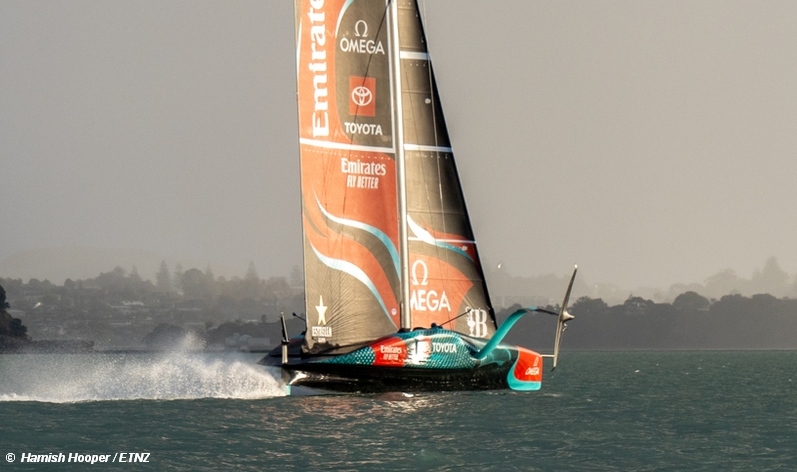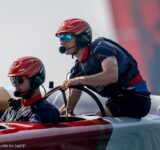Emirates Team New Zealand took advantage of a weather window to quietly launch the AC75 raceboat that will defend the Louis Vuitton 37th America’s Cup in Barcelona in October.
The hopes of this sailing-mad nation rest on a progressive and heavily refined design, a (big) step-on from their America’s Cup winning boat ‘Te Rehutai’ of AC36.
Wasting on time after the surprise rollout on Friday, the shore crew worked quickly to step the mast – noticeably more aft of the foil arms than on the previous generation and the new boat was towed out to begin its early commissioning on a residual and gradually lessening breeze up the Hauraki Gulf.
What we see from the initial underbelly shots is a slenderer bustle/skeg running all the way aft having begun at a micro-chine on the bow.
A more pinched and acute stern houses a neatly hung rudder off the back of the skinny bustle taper whilst at the foil arm junction there is a neat volume-reducing indent that announces the ‘crew-area’ of the hull that is exquisitely shaped with a slight concave.
As we saw on the Alinghi Red Bull Racing reveal, the hull is aggressively flared off the bustle to produce an almost flat flaring that runs aft whilst the crew pod area tapers smoothly as opposed to the harsh cut-out that was on display by the Swiss.
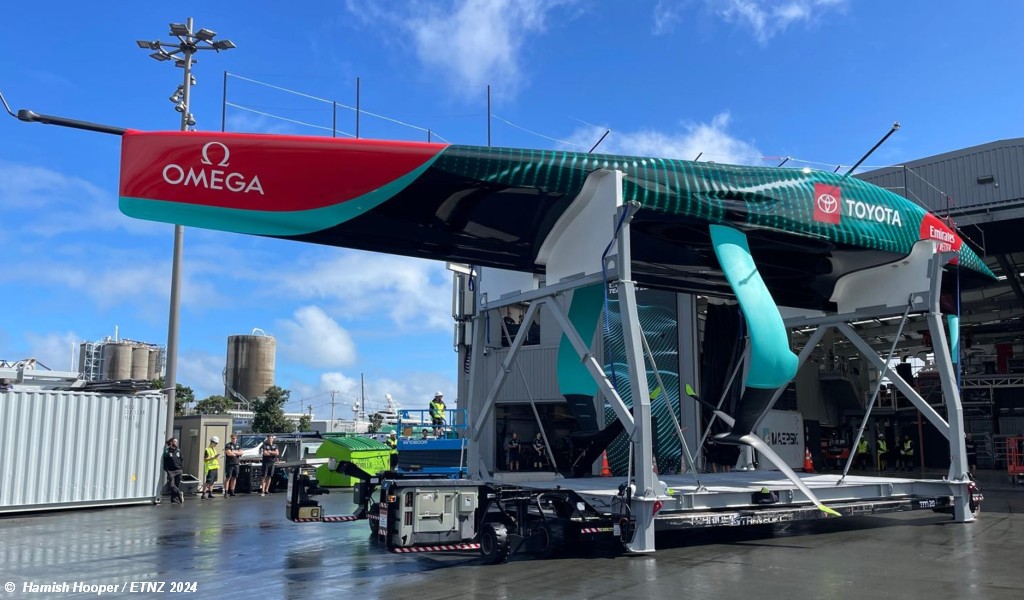
The foil arms and indeed the foils themselves looked to be either legacy or very much base models and it’s totally understandable that the teams won’t be revealing anywhere close to final foil iterations until much closer to the competition.
The bow and foredeck profile is conservative, eschewing the ‘Venturi’ bumps or tunnel profile that we saw on the Swiss reveal, and expect elsewhere, although the hull/deck join is certainly a nod to aero simulation and modelling.
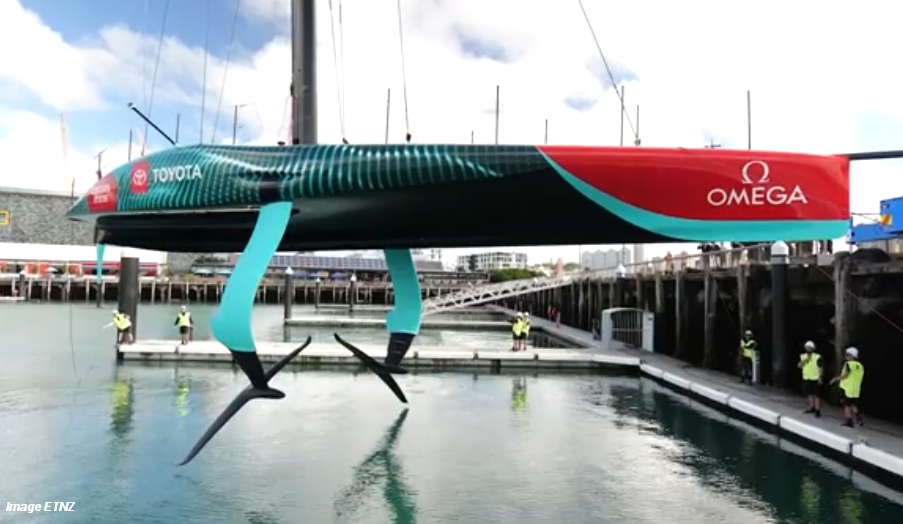
The bow itself is sharp and thin, coming to the minimum volume quickly after a fine entry – certainly a consideration for the expected waveforms in Barcelona – and from bow-on the hull flairing is very evident.
Up forward, just ahead of the trim station, the jib tracks and the 3D trim mechanism are sunk into small pods either side.
From dead astern, the form is virtually elliptical, tapering smoothly to the transom. What it screams all over is ‘efficiency’ and there looks to be barely a millimetre that hasn’t been pored over in the design office.
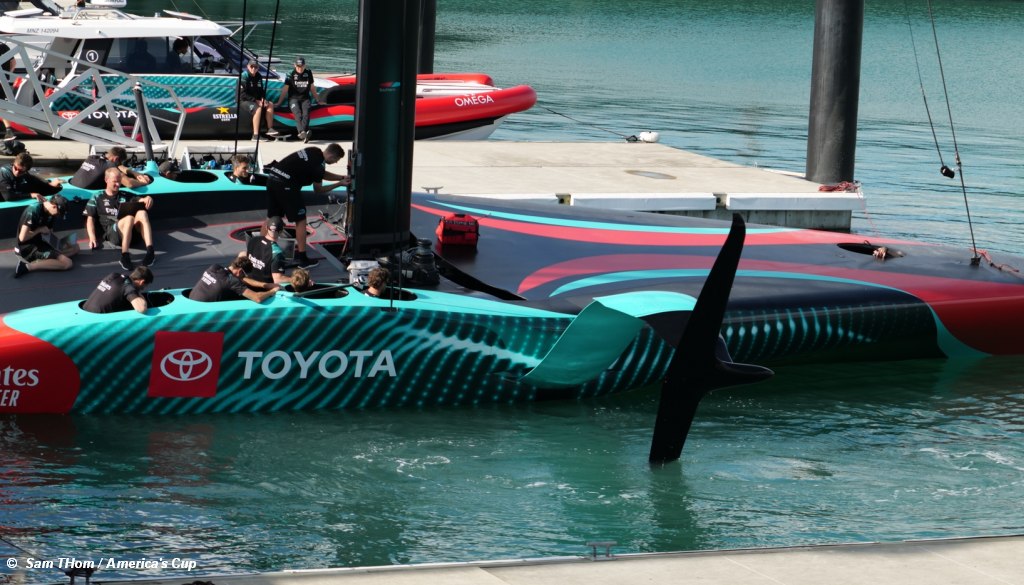
Out on the water during the tow test, the crew configuration could be seen, and Emirates Team New Zealand will be running with four crew in each pod with the cyclors aft, the helm position immediately after the cyclors and the trimmer in the forward position – a standard set-up that they used on Te Rehutai.
The deck moulding is super clean and flares up to mould into the crew pods, creating a very clean flowing lower section where the aero is most disturbed.
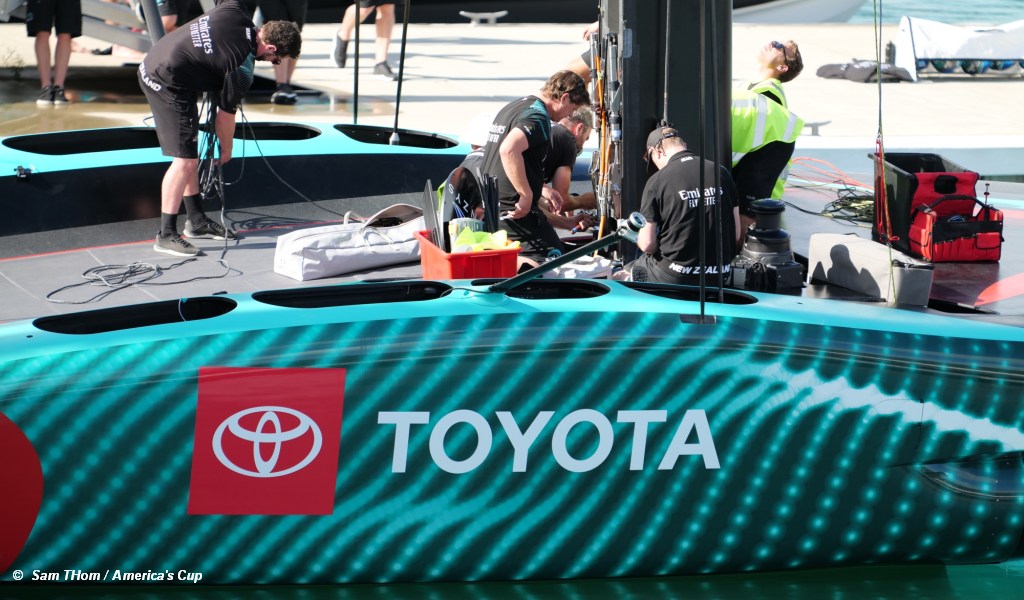
Not only did Emirates Team New Zealand launch, step the mast and tow-test but the sailors also managed to launch sails and be the first boat of the new AC75 cycle to actually sail – big milestone for the 37th Louis Vuitton America’s Cup.
And it was here where we saw some great sail detailing, with the neatest clew area yet seen on an AC75, with the fairing extending low-down like an anvil stretching to the mainsheet traveller – quite where the controls are housed (presumably within the double-skin mainsail) is what the recon will reveal soon.
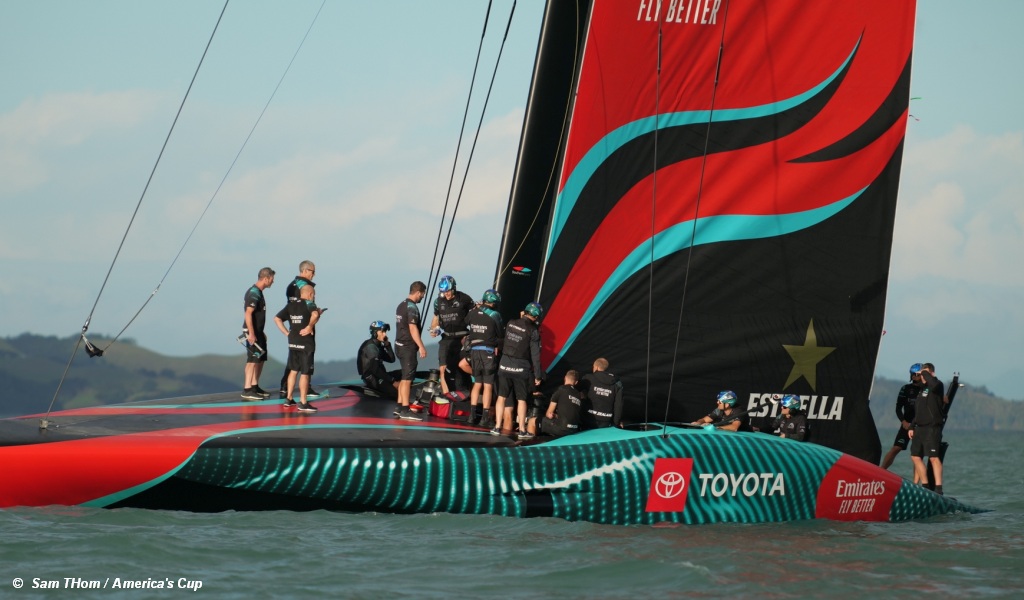
Great detailing that we will see a lot more of in the coming weeks. On this maiden sail, the mode was low and fast with the end-plating effect very much in evidence as Blair Tuke and Andy Maloney rode that ride-height super-close to the water’s surface.
It was a long day on the water with the new boat returning to base in the dark after a small issue with lowering the port skin after the halyard lock stuck, but Peter Burling, skipper for Emirates Team New Zealand seemed stoked with the new boat saying:
“Awesome day to get the raceboat out of the shed, get everything calibrated, get through all our checks and then get a short sail in at the end of the day just before we lost the light.”

“It was absolutely amazing and incredible effort by everyone involved in the team to get that done . . . “
“It was pretty incredible to be able to sheet on and get a few foiling tacks straight off the bat but the boat felt really good, it felt quite like we predicted it to which was nice as well, and now we’re looking forward to going back and having a good look at the data and trying to make good plan going forward.”
Talking about the overall design, Pete added: “We’ve definitely been pretty aggressive with the design, so we’re really happy with what we’ve produced.
(Magnus Wheatley)
Related Post:
Emirates Team New Zealand surprise rollout/launch of their new AC75

